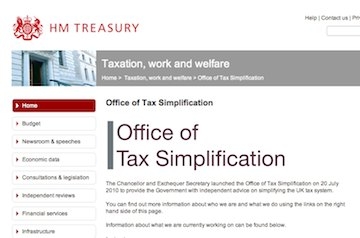
Govt tax adviser wants radical shake-up of VAT

The Office of Tax Simplification is calling for radical simplification of VAT including a move to bring nearly all businesses inside the VAT system.
One of the proposals from the OTS could see the VAT threshold cut from the existing £85,000 level - “one of the highest in the world” - to bring more small firms into the VAT arena and save £2bn in VAT relief. The OTS says the threshold acts as a bar to some businesses to grow bigger.
One issue for Financial Planners has been the issue of VAT on fees and when to apply VAT. Lack of certainty on the issues has caused issues for many planners.
The OTS, an independent but influential adviser to government, said that the most the significant issue identified in its soon-to-be-published report on VAT simplification is the VAT registration threshold - the turnover level above which a business must enter the VAT system and charge VAT on its sales. At £85,000 the UK has one of the “highest levels in the world”, it says.
The body says that by enabling many small businesses to stay outside of the VAT system the high threshold is a form of simplification, but it’s an expensive relief, costing around £2bn per annum, and evidence strongly suggests that many growing businesses are “discouraged from expanding beyond this point.”
The OTS says that after over 40 years, the tax is showing its age. What was meant to be a simple tax has become “highly complex” and it has not kept pace with changes in society.
Angela Knight, chair of the OTS Board, said: “This report presents an opportunity to start addressing the many anomalies of VAT. The tax is awash with layers of complexity reflecting both its evolution over the last 45 years and aspects of the Purchase Tax that VAT replaced. For small businesses, this report will propose ways of simplifying many irritating administrative technicalities and kick off a debate about the registration threshold.”
Paul Morton, OTS tax director, said: “This report will flag up the effects of the registration threshold, how entry into the VAT system might be smoothed and many other areas where simplification would be beneficial, particularly the complex and often subjective boundaries between those supplies which are standard rated and those which fall within the reduced or zero-rates or which are exempt.”
The OTS’s core recommendations will include:
- that the government should examine the current approach to the level and design of the VAT registration threshold
- that HMRC should maintain a programme for further improving the clarity of its guidance and its responsiveness to requests for rulings in areas of uncertainty
- that HM Treasury and HMRC should undertake a comprehensive review of the reduced rate, zero-rate and exemption schedules.
The report looks at options for reducing the current ‘cliff edge’ effect resulting in a “very visible bunching” of businesses just before the VAT threshold, and an equally large drop in the number of businesses with turnovers just above the threshold.
The OTS report is due to be published on 7 November. VAT was introduced in 1973 on entry of the UK into what is now the European Union and replaced Purchase Tax. VAT is the third largest source of tax revenue collected by HMRC after income tax and National Insurance Contributions, raising £120bn in 2016-17 - 22.5% of all taxes.
